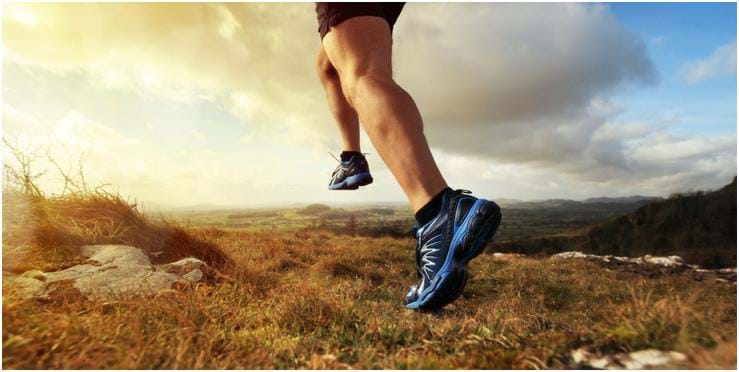City to Surf in August...here I come!

Last month we talked about all of the posture tips for running to prevent injury and make your running style super efficient. Have any of you started to utilise at least 1 or 2 of the postural cues when running (or even walking)?
Here are a few more things to consider before you head out and start your training for the City to Surf or May SMH Half Marathon! (or to walk the dog each night).
The ultimate key to success is having the right running shoes! It is always a good idea to get your shoes chosen and fitted by a qualified professional. As physiotherapists, we work closely with podiatrists and therefore get the inside intel on the leading shoe brands. Currently Brooks, New balance and Mizuno are making top-notch running shoes.
However, there are various styles in each brand, for various terrains, for various foot types. Therefore getting your shoes fitted by someone with the 'know how' is a must!
Running on the right surface can help you avoid those niggly injuries, and is especially important if you are new to running or if you are returning to running after a period of time off. The perfect terrain is level, not too soft nor too hard. Sand and grass can often be too soft, cement or road often too hard. The best by far is running on man-made dirt tracks, such as compressed gravel, stone aggregate or cinders tracks.
These ideal terrains may not be so easily on your door step, so try to mix up your surfaces to keep your body adapting and not loading up too much repetitively.
Research strongly supports increasing your cadence (number of strides per minute) and shortening your stride length. This has been shown to improve your efficiency and performance, and is associated with reduced injury rates. Therefore keep your strides short, and if you want to improve your pace increase the number of strides you take per minute, rather than lengthening your stride. It is said that a cadence that is ideal for everyone running is between 80-100 steps per minute. Get counting!
- Why not start with interval running
For both new runners and those returning to running, to ease your way back into things, why not start with interval running? Interval running is a fantastic way to return to running gradually and avoiding fatigue and overload related injuries. The following is an example of an interval running program:
|
Week 1
2min jog, 4 min fast walk x6
Week 2
4min jog, 4min fast walk x4
Week 3
6 min jog, 2min fast walk x4
Week4
10min jog, 2min fast walk x3
|
There are also plethoras of running apps that can be downloaded, often for free that can take you through a graded jogging program. I have had friends successfully work their way through the Couch25k app. This app talks you through a 9 week interval training program to have you running from nothing to 5ks in 9 weeks. You can even load up your own favourite motivating exercise music to listen to whilst being directed by the wonderful voice over.
It is always a good idea to condition your body prior to return to running. This can be done by performing specific exercises that target the essential muscle groups. The muscles of the core and buttocks are vital to running, as they provide your legs with a stable and level base from which to move under. Here are some early stage core and buttock exercises to get you started:
- The Leg Roll In and Out. This exercise has you thinking about the stable pelvis and the deep set of muscles within the deep abdomen and pelvis. Applying this muscle 'feeling and awareness' when running will build resilience about the pelvic platform, hips and spine.
- Clam. This exercise builds strength, awareness and endurance in the lateral hip area and a muscles specifically called 'gluteus medius'. This muscle controls the hip joint within the pelvis, and prevents the awkward side to side drop of the pelvis seen in some walkers/runners. Weakness in this muscle can cause lower back pain, hamstring and ITB injuries and knee pain.
- Lunges. This gets you up and on your feet, putting it all together. Running has you needing leg strength, hip control and pelvic control and lunges have you thinking about all of this. Take your time and work that lower body. Try fixed feet lunges and then progress to stepping lunges to make it even more dynamic and like running.
If you would like a personalized program or the above exercises progressed to higher level running specific exercises please contact your Fix Program physiotherapist.
Leg Roll Out and In.pdf (151.3KB)
The Clam Exercise finding deep bottom muscles.pdf (191.6KB)
Deep Lunges.pdf (118KB)
www.c25k.com